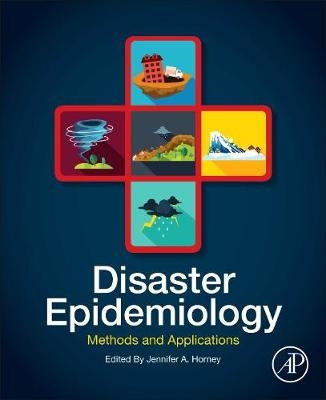
Disaster Epidemiology
Academic Press Inc (Verlag)
978-0-12-809318-4 (ISBN)
Disaster Epidemiology: Methods and Applications explains how public health surveillance, rapid assessments, and other epidemiologic studies can be conducted in the post-disaster setting to prevent injury, illness, or death; provide accurate and timely information for decisions makers; and improve prevention and mitigation strategies for future disasters. These methods can also be applied to the study of other types of public health emergencies, such as infectious outbreaks, emerging and re-emerging diseases, and refugee health. This book gives both the public health practitioner and researcher the tools they need to conduct epidemiological studies in a disaster setting and can be used as a reference or as part of a course.
Jennifer Horney is a Professor and Founding Director of the Epidemiology Program and Core Faculty at the Disaster Research Center at the University of Delaware. Her research focuses on assessing the health impacts of disasters, including inequitable impacts among physically and socially vulnerable groups. She is currently a member of the Board of Scientific Counselors for the Centers for Disease Control and Prevention’s Center for Preparedness and Response, a member of the National Academies of Sciences’ Gulf Research Program’s Enhancing Community Resilience Committee, and a member of the Publications Board of the American Public Health Association. She has provided technical assistance to public health agencies globally around disasters, emerging infectious disease outbreaks, and pandemic influenza planning and response.
An Introduction to Disaster Epidemiology Josephine Malilay and Jennifer A. Horney 1. History of Disaster Epidemiology: 1960-2015 Jennifer A. Horney 2. Methods: Surveillance Kahler Stone Vignettes: Veterans Health Affairs, Veterans, and Disasters Tiffany Radcliff, Aram Dobalian and Karen Chu 3. Applications: Informatics: Using Information Systems to Improve Surveillance During Disasters Laura Edison, Karl Soetebier and Hope Dishman 4. Applications: Shelter Surveillance Rebecca Jean Heick Post-Disaster Carbon Monoxide Surveillance Kanta Sircar and Dorothty Stearns 5. Applications: Mortality Surveillance Rebecca S. Noe 6. Study Designs in Disaster Epidemiology Latasha Allen and Jennifer A. Horney 7. Applications: CASPER Amy Helene Schnall, Amy Wolkin and Tesfaye Mekonnen Bayleyegn Applications: ACE Maureen F. Orr and Mary Anne Duncan Vignettes from Recent Responses: California Geothermal Gas Vents Svetlana Smorodinsky, Tracy Barreau and Jason Wilken Vignettes from Recent Responses: California Drought Jason Wilken, Svetlana Smorodinsky and Tracy Barreau 8. Methods: Questionnaire Development and Interviewing Techniques Amy Helene Schnall, Amy Wolkin and Nicole Nakata Vignettes from Recent Responses: Foodborne Marilyn Felkner, Venessa Cantu and Kevin Mcclaran 9. Applications: Social Vulnerablity to Disaster (Hampton and Hertford Counties - Isabel) Danielle Spurlock 10. Applications: Responder Safety Renee Funk Vignettes from Recent Responses: Pregnant Women and Ebola Jonetta Johnson Mpofu and Michelle Dynes 11. Methods: Data Analysis Ashley Conley 12. Applications: Bioterrorism, Biodefense, and Biotechnology Koya Allen Vignettes: Natural Disasters and Climate Change Joel Casey Dietrich Vignettes: Impacts on People with Pre-existing Chronic Medical Conditions Pamela Allweiss 13. Applications: Disaster Communication and Community Engagement Jennifer C. Beggs Vignette from Recent Responses: Roseburg Oregon Mass Shooting Akiko M. Saito 14. Discussion and Conclusion - What Disaster Epidemiology Can Contribute to Resilient Communities Jennifer A. Horney Appendix: Resources from Disaster Libraries Suzanne Shurtz Clark
| Erscheinungsdatum | 09.11.2017 |
|---|---|
| Verlagsort | San Diego |
| Sprache | englisch |
| Maße | 191 x 235 mm |
| Gewicht | 430 g |
| Themenwelt | Medizin / Pharmazie ► Physiotherapie / Ergotherapie ► Orthopädie |
| Studium ► Querschnittsbereiche ► Epidemiologie / Med. Biometrie | |
| Naturwissenschaften ► Biologie ► Ökologie / Naturschutz | |
| Technik ► Medizintechnik | |
| ISBN-10 | 0-12-809318-8 / 0128093188 |
| ISBN-13 | 978-0-12-809318-4 / 9780128093184 |
| Zustand | Neuware |
| Haben Sie eine Frage zum Produkt? |
aus dem Bereich


